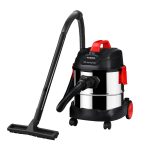Last Updated on May 21, 2024 by Ali Hamza
Medical nurse uniforms are the go-to option for current medical and healthcare uniforms. Medical sets or medical suits with matching medical tops and pants are available. Selecting between many companies, styles, or even custom scrubs possibilities is challenging. Hence, this complete guide on choosing the best medical fit will help you. This is a compilation of anything you need to learn regarding medical uniforms to make an informed selection.
How Do You Pick The Best One?
Convenience and mobility
The fit of medical nursing uniforms is crucial, as it determines how well they allow or limit movement during the day. Medical uniforms for medical nurses are frequently worn for the whole shift. If you do have to put on more PPE as the day goes on, it will be even more exhausting. Look for a medical outfit with a relaxed fit, flexible fabric, or a lighter material for all-day comfort and movement.
Softness & Stretch
Stretchy and lightweight fabrics are used in some new school scrubs, allowing for a smaller fit without sacrificing movement. Stretchy ones tend to become less durable and unable to withstand high heat washes than non-stretchy ones.
Fit
The way your uniform fit has an impact on your comfort and mobility.
They should be loose and not baggy when worn:
- It allows you to roam about freely in it.
- It will enable you to bend over or stretch upwards while exposing yourself to the elements.
- If you’re in doubt, go for the larger size.
They must be loose enough for you to move around freely. You can bend down, squat, and stretch upwards without exposing yourself. Check that your medical top is long enough yet if it has been tucked in. The pants should come to a point slightly above the ankle. It should be loose enough to allow you to move freely. These pants should have an elasticised waistline with a drawstring for a comfortable fit.
Practicality
They should be ergonomic, allowing you to keep what you need from you at all moments without creating a tangle. This is a subjective metric, yet it is critical to a scrub’s overall performance. The characteristics can make and break the uniform, allowing you to appreciate the conclusion of your day or irritate you each time you function in the medical nurse uniform. In a nutshell, look for Pockets, Collars, and Necklines.
Pockets
Look for pockets, collars, arm seams, and zippers on scrubs. The number of bags and their arrangement will let you store your phone, notepads, medical supplies, etc. We adore pockets that keep things in easy-to-reach places.
In particular, medical shirts with three pockets are a favourite of ours. There are two front pockets on the lower torso and one on the chest. They should have this as a bare minimum. Speciality pockets, such as side seam pockets and zipped pockets, might be helpful, but they can also get in the middle of movement when you need to crouch down. These are vital characteristics to think about.
Types of Fabric: What Do Different Fabrics Mean?
The fabric of the medical nursing uniform impacts its comfort, durability, and upkeep. We’ll review the many materials and how their qualities affect the cleanser you wear.
Cotton, rayon, spandex, and viscose are the most common materials used in uniforms. Natural materials, such as cotton, become increasingly soft and comfy over time; synthetic textiles, on the other hand, are easier to manage, usually wrinkle-proof, and have colours that last much longer. Thanks to modern technology, synthetic materials such as polyester, rayon, and spandex are now as comfortable as cotton. However, remember that spandex doesn’t dry appropriately at high temperatures. The breathability of your uniform is also affected by the fabric. Some who work in cold environments may prefer something warmer, while others who labour in warm and humid climates may choose something more extraordinary that dries quickly.
Apart from this if you are interested to know about Medical condition then visit our Health category.


























